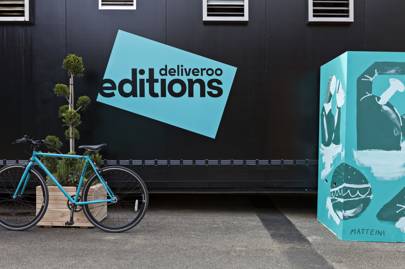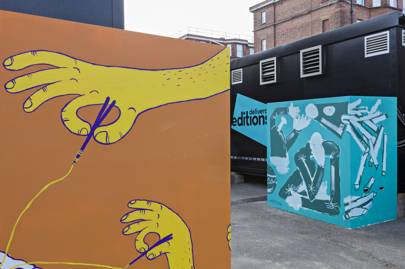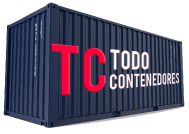Since on-demand food delivery service Deliveroo launched in London in 2013 it has expanded to 140 cities, in 12 countries, and works with more than 20,000 restaurants. To get food to customers rapidly it requires restaurants to be located near to the customer. If a particular restaurant isn’t nearby, its food can’t be delivered.
On the back of a $275 million (£220m) round of investment last year, the firm is now bringing restaurants to new locations. The development has been dubbed Deliveroo Editions.
«Editions is a delivery-kitchen concept,» Deliveroo CEO William Shu tells WIRED. Across London – in Camberwell, Battersea, Dulwich and Canary Wharf for now – the firm has created kitchens that only have room for chefs, kitchen staff and its gig economy workers.
Each of the Editions kitchens will have space for between five and ten different restaurants and Deliveroo plans to open in 30 locations across the UK this year. Trials have been taking place at the four London locations for a number of months.
The idea is to take food to where people are but restaurants aren’t. And Deliveroo’s expansion is largely based around the data collected from customers and locations. «Let’s say you see less than 20 restaurants on the app but the area has a lot of demand,» Shu says. «What we would then do is establish the missing cuisines and invite our partners to take up residency in the kitchens».

At launch, Deliveroo says it is working with Franco Manca, On The Bab and Motu Indian Kitchen but hopes to expand to 200 once more kitchens open.
The on-demand company is providing the infrastructure for the kitchens – which are essentially large containers fitted-out with relevant kit – as well as the equipment that goes inside them. Restaurant partners are in control of their own menus and employ kitchen staff.
The delivery firm says it hopes the new locations will help it to provide work to 1,000 more people across the country. Jobs will be split between those working in the kitchens, employed by the restaurants and those who work as delivery drivers.
The expansion from Deliveroo comes at a time when the firm is being challenged for its position by Uber’s own food deliver service Uber Eats and other companies such as JustEat and HungryHouse.
Separately, a group of Deliveroo’s food couriers plan to take legal action against the company over their employment rights. A collection of 20 couriers argue they are employees – Deliveroo says they are self-employed contractors – and should be entitled to a minimum wage, sick pay and holiday allowance. Similar legal action was successful against Uber in October 2016.

Shu explains that there are generally two business models for the restaurants taking part in the kitchen-only services. In some cases, he says, the restaurants are helping to pay towards the kitchens and those that do not are charged a higher commission on each order placed on Deliveroo.
Read about the Taylor Review on Modern Employment Practices
The idea of Deliveroo investing in kitchen space was first mentioned in August 2016. At the time, Shu said that while delivery can generate ten to 30 per cent of a restaurants revenue, the additional orders have the potential to cause delays within a physical eateries kitchen.
With the roll-out of Editions, Shu is eyeing the creation of more kitchen-only delivery spaces around the world. «We’re going to open up Singapore next week, then Dubai very quick thereafter,» he says. «This is a global opportunity for us.»


Comentarios recientes